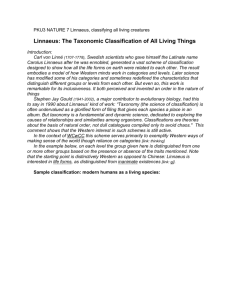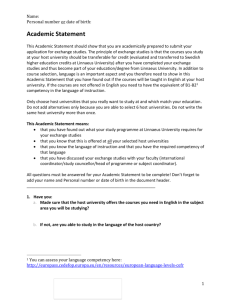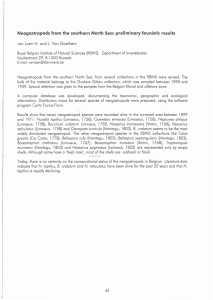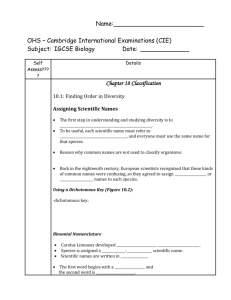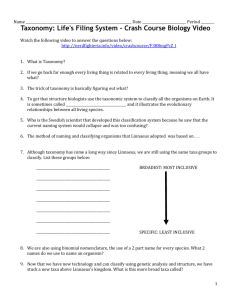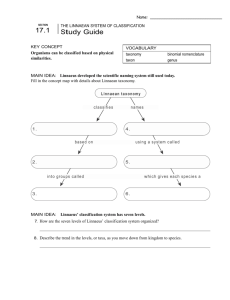Doing General Practice research in an international group
advertisement
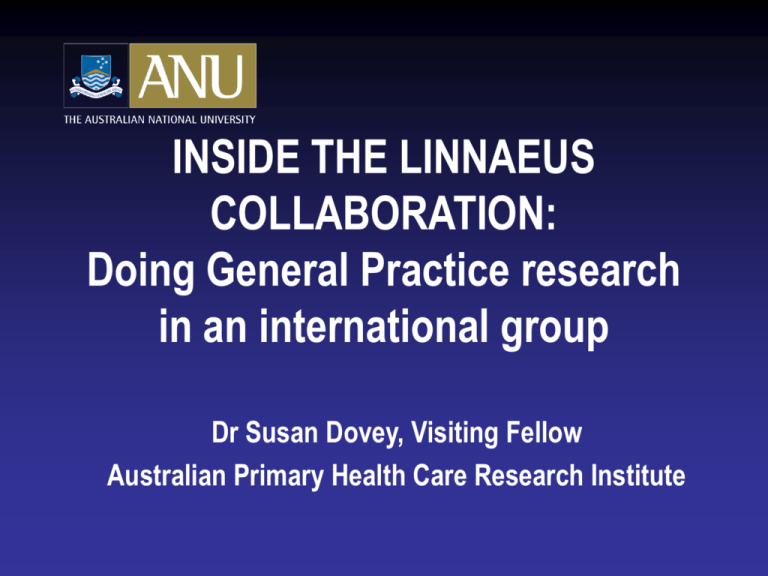
INSIDE THE LINNAEUS COLLABORATION: Doing General Practice research in an international group Dr Susan Dovey, Visiting Fellow Australian Primary Health Care Research Institute Overview The Linnaeus Collaboration • What it is • Where it came from • Where it’s going Tensions • Single country versus international research priority? • Funding Pluses, Minuses, and Compromises • • • • Leverage Collegiality Misunderstandings / misinterpretations Pragmatic challenges What is the LINNAEUS Collaboration? Learning in an INterNational group About Errors and Understanding Safety Linnaeus countries Australia Canada England Germany The Netherlands New Zealand The United States Where the Linnaeus Collaboration came from A Time A Knowledge Gap Recognition of knowledge gap Crystallising the idea “Lesson drawing” from international research Describing and clarifying problems and determining whether they are commonly experienced in more than 1 country Identifying the range of approaches used in different countries to address problems Developing a theoretical model of how an intervention addresses a problem Testing the model in different countries and understanding how the contexts of individual countries affect performance of the model … where the Linnaeus Collaboration came from Resonance Mates Serendipity in forming the PCISME team Me in the US Steven in the US Walter in Canada Martin in the UK Murray in New Zealand Michael in Australia Chris in the Netherlands Not Korea Ferdinand in Germany What we’ve done so far The Primary Care International Study of Medical Errors • • • • • • • Protocol and planning early 2001 Data collection late 2001 First paper out in AUSTRALIA in 2002 (Makeham, et al) Papers in GERMANY in 2003 Papers accepted in other countries Full study report not yet accepted for publication Second study planning in 2003 Annual meetings Discussion papers and documents Tensions in International research Has to be in a research priority area for more than 1 country Funding in individual countries versus funding for an international project or program Sovereignty The Good Things about international research More understanding of other countries and cultures More understanding of your own country and culture Greater exposure to new ideas Being able to collect data 24 hours a day Glamour The Bad Things about international research Misunderstandings Communication and communication technology Research leadership and time commitment Extended analysis stage Publication and authorship The Compromises in international research Study design – e.g. sample size Study topic Take the time it takes to collaborate Accept long authorship lists Key Messages Know why you need to do international research before you start Then follow the Nike Motto JUST DO IT Thank You


